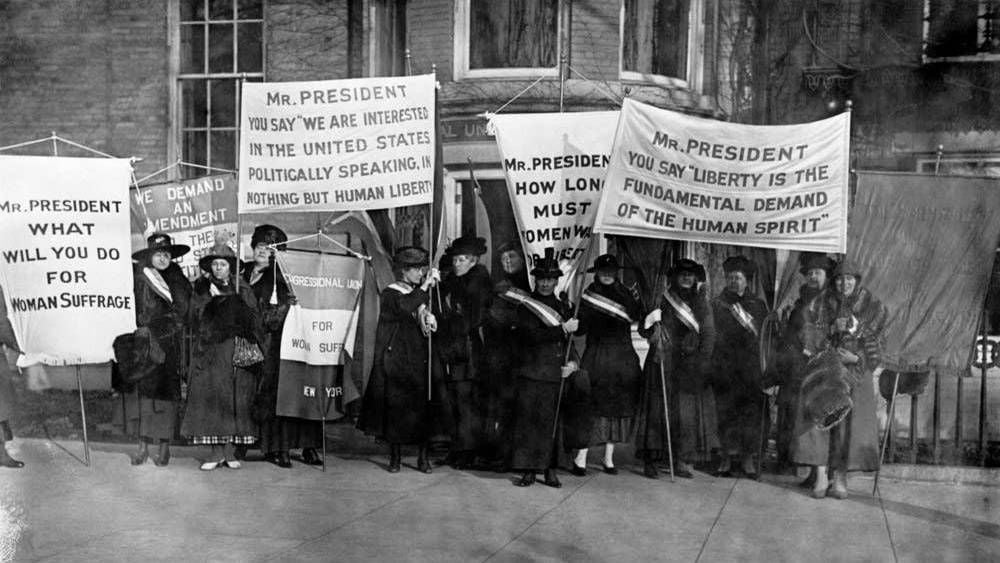So Close: The Struggle for Minnesota Women to Gain the Vote

Women in Minnesota and across the country campaigned for the right to vote across decades in the late 1800s and early 1900s. Women in Minnesota came close to gaining full suffrage many times, but each time the women stepped forward, government officials took a step back. This dance continued until 1919 when Minnesota ratified the 19th Amendment and women gained the right to vote.
The first time that Minnesota women came close to gaining the right to vote was in 1870, 49 years before the 19th Amendment was ratified in the state.
The effort that led to the close vote in 1875 actually began in 1868 when a suffrage leader named Mary A. Graves collected 350 signatures for a petition. Her petition asked that the word “male” be removed from a list of qualifications for voting in the Minnesota Constitution. She shared her petition with Representative Alpheus B. Colton, and he agreed to present it to the House of Representatives during Minnesota’s legislative session.
The Minneapolis Tribune published an article on January 24, 1868 explaining how the House responded to Mary Graves’ petition, and the news wasn’t good for suffrage supporters. Some legislators were openly opposed to women’s suffrage, and many others simply had other priorities.
Despite this defeat, suffrage leaders persisted in subsequent years in their efforts to petition the Minnesota Legislature. In 1870, two petitions with a combination of 750 signatures became House File 123, introduced by Representative Abram M. Fridley. This bill would create a public referendum to see if current Minnesota voters would be in favor of granting all Minnesota citizens, including women, men, immigrants and Native Americans, who were 21 years or older the right to vote.
The public referendum itself was a controversial issue since House File 123 mandated that both men and women who met the necessary qualifications to be citizens could vote on the issue, with women’s ballots being separated into distinct ballot boxes.
Somewhat surprisingly, this bill put the question of suffrage to the Minnesota people via a referendum passed by both the House and the Senate in 1870. Some legislators who voted for the bill admitted that they would not vote for it at the polls, but they wanted the people of Minnesota to have a chance to decide on suffrage for themselves.
In 1870, the governor was Horace Austin, a Republican who held the position from 1870 to 1874. Austin was publicly pro-suffrage, but he disappointed suffrage activists by vetoing the bill that would have put the issue of suffrage to Minnesota voters to a close. According to the Minnesota Historical Society Website MNopedia, Austin privately explained that his opposition to the bill was because he believed women could not legally vote on a constitutional amendment before formally being granted the right to vote in the state.
Therefore, the saga for Minnesota women to gain the vote continued. In 1875, the Minnesota Suffrage in School Affairs Amendment was passed via public referendum. This amendment allowed women to vote in school elections.
In 1911, the Minnesota Senate voted on another suffrage bill, but the bill failed by two votes. Two years later, in 1913, the Minnesota House passed a suffrage amendment, but the amendment failed to pass in the Senate. Again, Minnesota came so close to allowing women to vote in the state of Minnesota, but failed.
Women’s suffrage came so close once again, in 1915, in Minnesota, but the bill was defeated by one vote. Therefore, women in Minnesota had to wait until 1919 to vote, when Minnesota ratified the 19th Amendment that revised the federal constitution.
When the time comes for the next Minnesota election, consider the women and men who came before us who continued to fight for women’s suffrage despite many agonizing defeats. In the spirit of these devoted and determined activists, remember that your vote matters!
Watch the Minnesota Experience documentary, Citizen, which explores the multigenerational march of Minnesota women and all they hoped would come with the vote.
Editor’s note: This story – and others in the collection, Then & Now: Reflections on Women’s Suffrage – was written by a St. Catherine University student in the Public Relations Writing class held in the spring of 2020. The piece has been minimally edited to preserve the integrity of the student’s perspective. We hope you enjoy discovering what the next generation of writers, historians and activists has to say about the impact of the women’s suffrage movement then and now.

This story is made possible by the Arts and Cultural Heritage Fund and the citizens of Minnesota.
As Minnesotans look for ways to show their support for healthcare workers on the front lines of the COVID-19 pandemic, we took a look back in time to celebrate the contributions that four women – all named Ruth – made to the state’s public health system.
Just 39 words in length, the 19th Amendment to the U.S. Constitution gave women the right to vote when it was passed on June 4, 1919 and enacted on August 26, 1920 – but its passage was fraught with decades of legal challenges and intense demonstrations in which women activists sometimes put their lives directly on the knife’s edge. Explore a timeline contributions of Minnesota women to the passage of the 19th Amendment.
